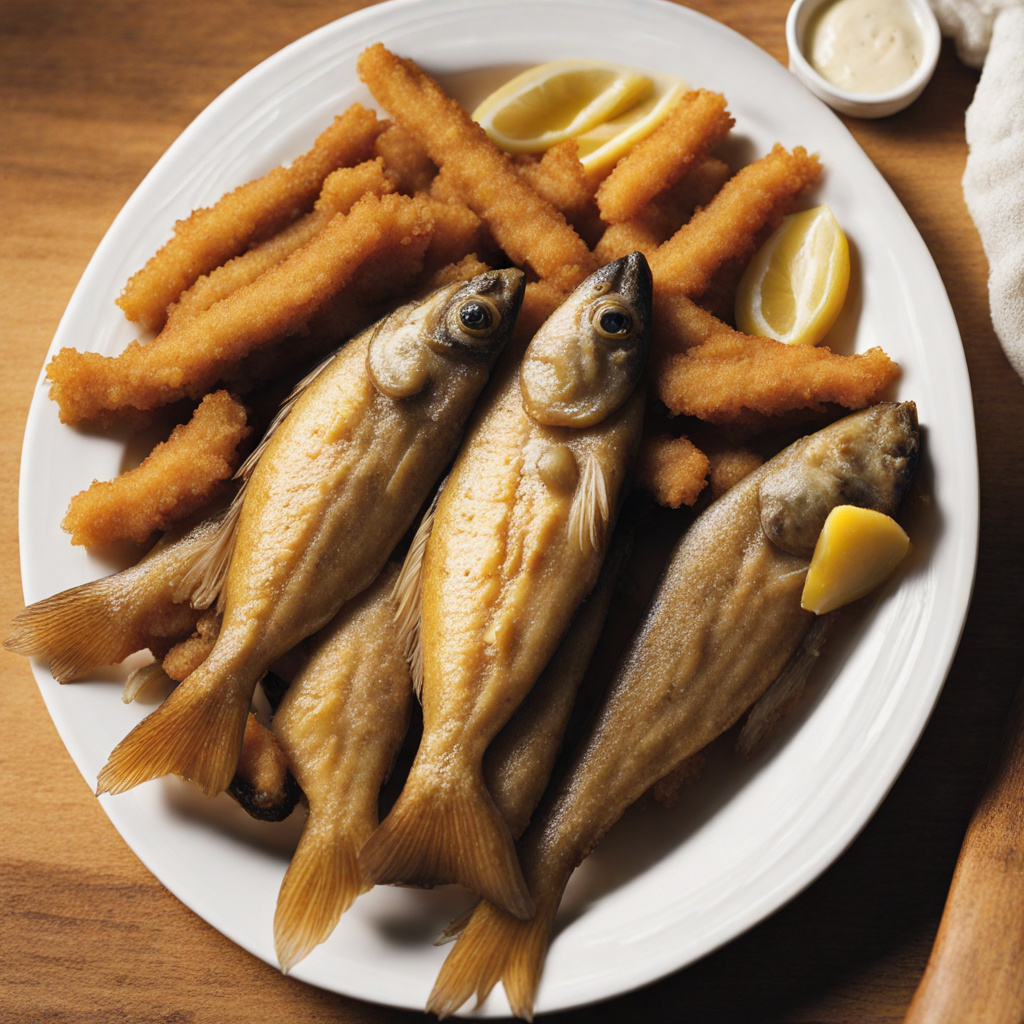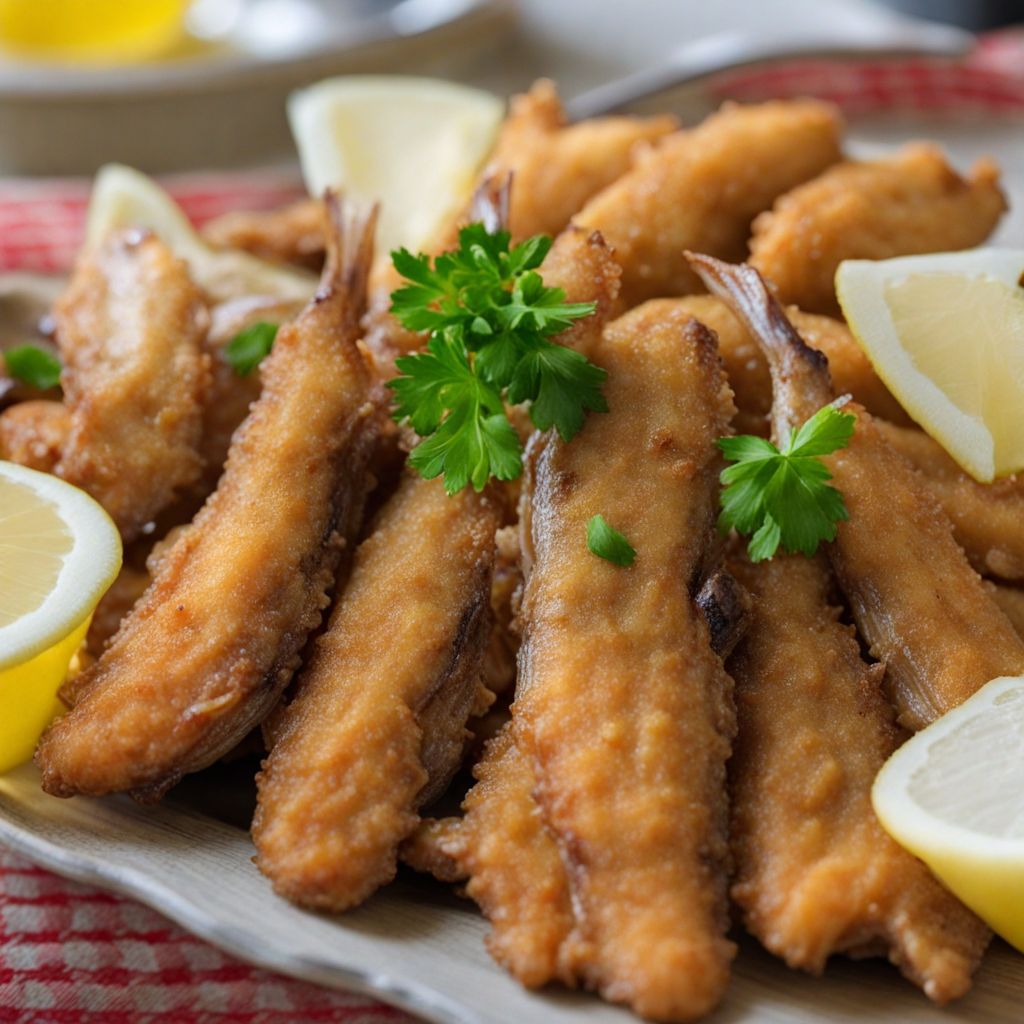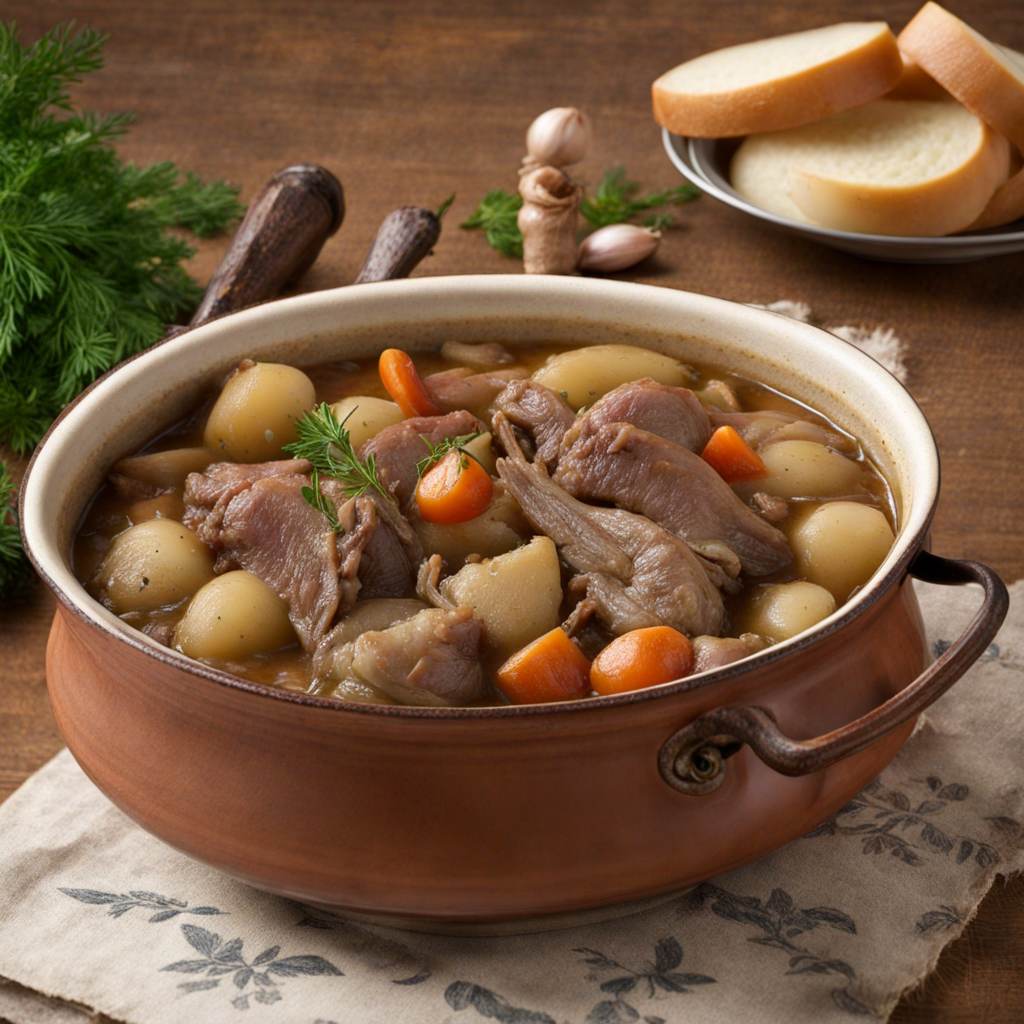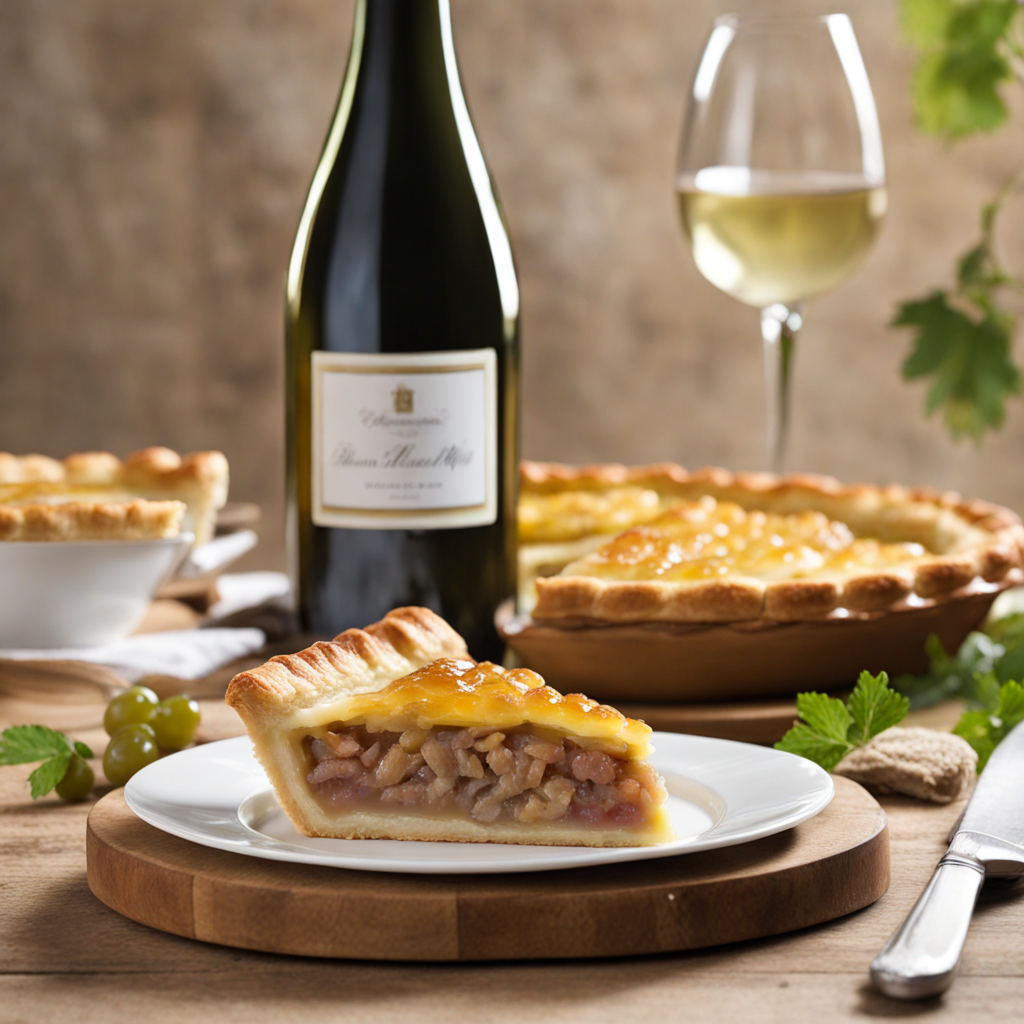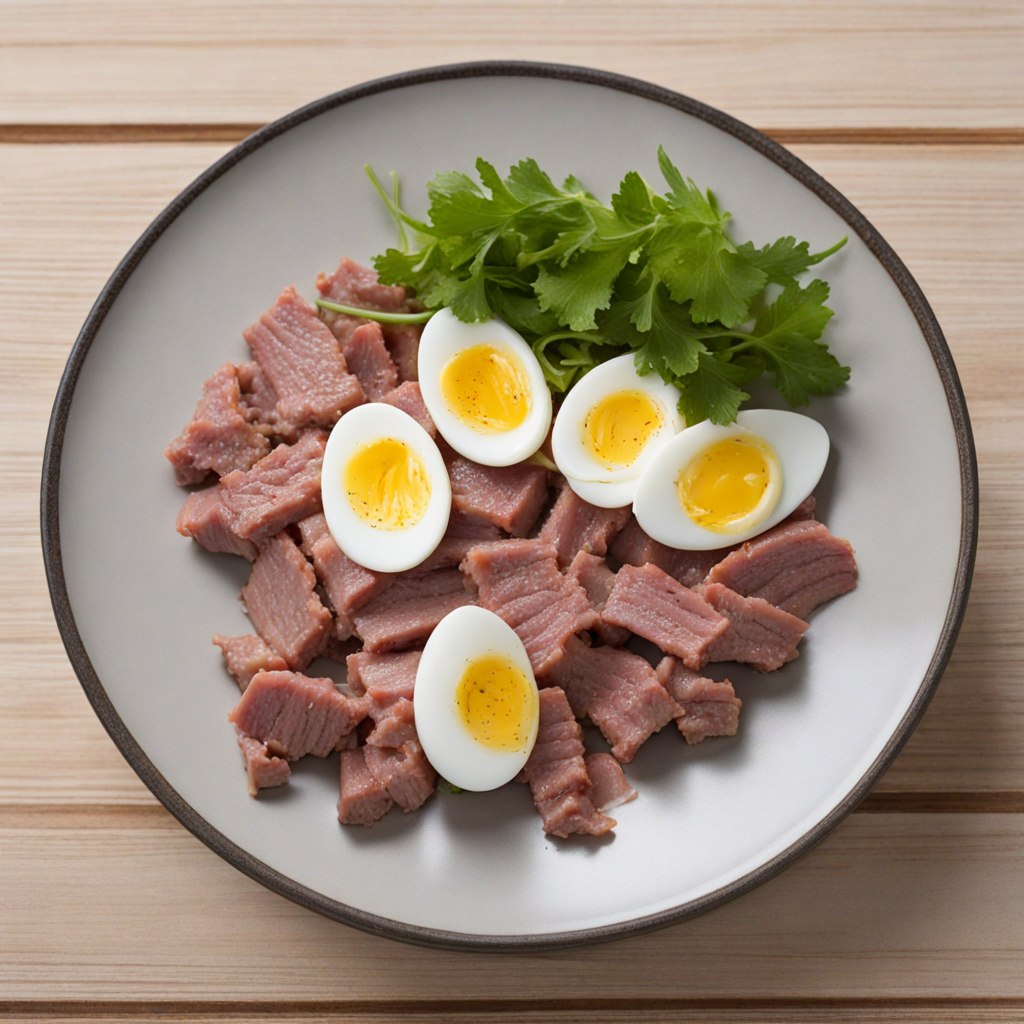Friture de la Moselle
Friture de la Moselle is a traditional dish from the Moselle region of Luxembourg, a picturesque area known for its rich culinary heritage and scenic landscapes along the Moselle River. The dish consists primarily of small fish, typically perch or trout, which are fried to a crisp perfection. The origins of Friture de la Moselle can be traced back to the region's fishing culture, where fresh fish from the river played a crucial role in the local diet. Historically, this dish was a staple for fishermen and their families, showcasing the abundant natural resources of the area. The flavor profile of Friture de la Moselle is delightfully simple yet satisfying. The dish highlights the delicate taste of the fish, which is enhanced by a light, crispy batter. When fried, the fish acquires a golden-brown crust that provides a satisfying crunch, while the meat inside remains tender and flaky. The simplicity of the preparation allows the natural flavors of the fish to shine through, making the dish a favorite among locals and visitors alike. It is often served with a squeeze of fresh lemon, which brightens the flavors and adds a zesty contrast to the richness of the fried batter. Preparation of Friture de la Moselle is straightforward, yet it requires attention to detail to achieve the perfect texture and flavor. The first step involves cleaning and gutting the fish, followed by marinating it lightly in a mixture of salt and pepper, allowing the flavors to penetrate the flesh. After marination
How It Became This Dish
Friture de la Moselle: A Culinary Gem of Luxembourg Nestled in the heart of Europe, Luxembourg may be small in size, but its culinary offerings are rich and diverse, reflecting the country’s unique blend of cultures and traditions. Among its notable dishes is the Friture de la Moselle, a delicious fried fish dish that captures the essence of the Moselle River region. This dish is not only a culinary delight but also a cultural symbol, representing the historical and environmental significance of the area. Origins: The Bounty of the Moselle River Friture de la Moselle finds its roots in the picturesque Moselle Valley, which stretches along the banks of the Moselle River, a vital waterway that flows through Luxembourg, France, and Germany. This region is renowned for its lush landscapes, vineyards, and rich biodiversity, particularly its fish populations. The Moselle River is home to various fish species, including perch, pike, carp, and eel, making it a natural source of sustenance for the local communities. Historically, the river's bounty was a crucial aspect of life for the inhabitants of the Moselle Valley. Fishing was not only a means of providing for families but also a communal activity that fostered social bonds. The Friture de la Moselle emerged as a way to celebrate these resources, showcasing the region’s culinary heritage. The dish typically features freshly caught fish, lightly battered and fried to golden perfection, allowing the delicate flavors of the fish to shine. Cultural Significance: A Dish of Tradition and Celebration Friture de la Moselle holds a special place in Luxembourg’s culinary landscape, serving as a symbol of local pride and tradition. It is commonly enjoyed during festive occasions and family gatherings, often accompanied by local wines, particularly the crisp and refreshing whites produced in the Moselle Valley’s vineyards. This pairing reflects the harmonious relationship between the land and its produce, embodying the terroir that defines Luxembourg’s gastronomy. The dish is also significant in the context of Luxembourg’s cultural identity. As a small nation with a rich history of influences from neighboring countries, Luxembourg has developed a unique culinary tradition that incorporates elements from German, French, and Belgian cuisines. Friture de la Moselle exemplifies this blend, highlighting the local ingredients while adhering to the simple yet flavorful cooking techniques cherished in the region. The dish not only nourishes the body but also serves as a reminder of the community’s connection to its environment and heritage. Development Over Time: Evolution and Modern Interpretations As with many traditional dishes, the preparation and presentation of Friture de la Moselle have evolved over time. In its earliest form, the dish was likely prepared in a rudimentary fashion, with local fishermen frying their catch over open flames. As culinary practices advanced and the availability of specific cooking equipment increased, the technique of frying fish became more refined. In the mid-20th century, as Luxembourg experienced economic growth and modernization, the popularity of Friture de la Moselle surged. Restaurants and eateries began to incorporate the dish into their menus, often experimenting with different types of fish and frying methods. Traditional recipes that once relied solely on local catch evolved to include variations that appealed to a wider audience, such as using breading or seasoning that reflected contemporary palates. Moreover, the rise of the tourism industry in Luxembourg brought Friture de la Moselle into the spotlight. The dish became a staple in local restaurants, catering to visitors eager to experience the authentic flavors of the region. This increased demand has spurred local fishers and farmers to collaborate, ensuring a sustainable supply of fresh ingredients and maintaining a balance between tradition and innovation. The Modern Culinary Scene: Sustainability and Local Sourcing In recent years, there has been a growing emphasis on sustainability within the culinary world, and Friture de la Moselle is no exception. Chefs and restaurateurs are increasingly focused on sourcing their ingredients locally, ensuring that the fish served is not only fresh but also responsibly caught. This shift reflects a broader trend towards environmental consciousness, as consumers become more aware of the impact of their food choices on ecosystems. Many modern interpretations of Friture de la Moselle incorporate seasonal vegetables and locally-produced condiments, creating a dish that is both rooted in tradition and reflective of contemporary culinary practices. The use of local wines and artisanal products further enhances the dining experience, allowing patrons to savor the flavors of Luxembourg in a holistic manner. Additionally, culinary events and festivals celebrating local cuisine have gained popularity, providing a platform for Friture de la Moselle to shine. These gatherings often include cooking demonstrations, tastings, and competitions that promote the dish and educate attendees about its cultural significance. Such events not only honor the dish’s history but also inspire new generations to appreciate and preserve Luxembourg’s culinary heritage. Conclusion: A Dish that Unites Friture de la Moselle is more than just a delicious fried fish dish; it is a culinary emblem of Luxembourg’s rich history, cultural identity, and environmental heritage. Its origins in the Moselle River reflect the deep connection between the land and its people, while its evolution over time showcases the adaptability and resilience of local traditions in the face of modernity. As Luxembourg continues to navigate the complexities of globalization and environmental sustainability, Friture de la Moselle stands as a testament to the importance of preserving culinary traditions that celebrate local resources. Whether enjoyed by locals or visitors, this dish invites everyone to partake in a shared experience of flavor, history, and community, making it an enduring favorite in the heart of Europe. Through every bite, one can taste the stories of the past, the vibrancy of the present, and the promise of the future.
You may like
Discover local flavors from Luxembourg


